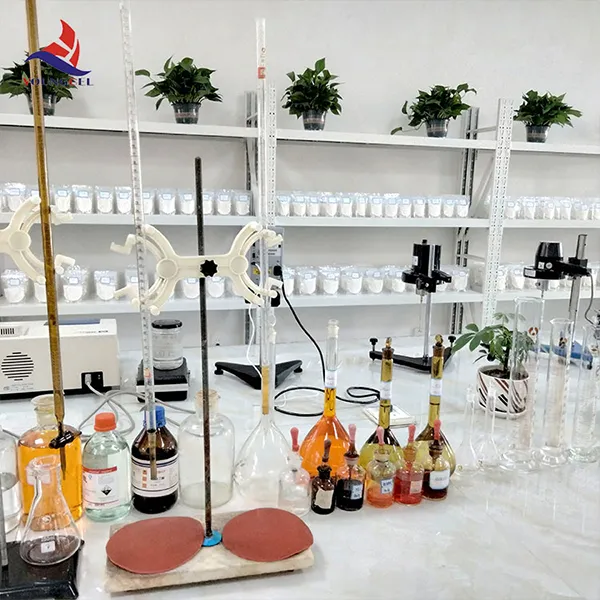The Role of Cellulose and HPMC in Paint Formulations
In the ever-evolving world of paint and coating technologies, the quest for enhanced performance and sustainability drives scientists and manufacturers alike to explore innovative ingredients. Among these, cellulose and Hydroxypropyl Methylcellulose (HPMC) have emerged as pivotal components to improve the properties of paint formulations. Understanding the significance of these compounds can help paint manufacturers in creating high-quality, eco-friendly products that meet the demands of modern consumers.
Understanding Cellulose and HPMC
Cellulose is a natural polymer derived from plant cell walls and is one of the most abundant organic compounds on Earth. Its unique structure provides a variety of functionalities that can be harnessed in various applications, including the paint industry. As a thickening agent, cellulose enhances the viscosity of paint formulations, which is crucial for optimal application and coverage.
On the other hand, Hydroxypropyl Methylcellulose (HPMC) is a semi-synthetic derivative of cellulose. This compound is created by the modification of cellulose with propylene oxide and methyl chloride. HPMC has gained popularity for its film-forming abilities, water retention properties, and compatibility with a wide range of solvents. These characteristics make it an attractive additive in paint formulations, contributing to the enhancement of the overall quality of the end product.
Benefits of Using Cellulose and HPMC in Paint
1. Improved Viscosity Control One of the primary roles of cellulose and HPMC in paint formulations is to regulate the viscosity. They allow for a controlled flow of the paint, ensuring a smooth application without drips or runs. The ability to tailor the viscosity is particularly useful for various application methods like brushing, rolling, or spraying.
2. Enhanced Film Formation HPMC, due to its film-forming properties, aids in creating a cohesive and durable film on the painted surface upon drying. This characteristic is essential for ensuring good adhesion to substrates, which directly influences the longevity and durability of the paint. A well-formed film protects surfaces from moisture and environmental damage, reducing the need for frequent repainting.
cellulose hpmc for paint

3. Water Retention One of the challenges in paint formulations is the balance of water retention properties. HPMC helps to retain moisture during the drying process, allowing for better workability and preventing rapid skinning of the paint. This feature is particularly beneficial in hot or windy conditions where evaporation can occur quickly.
4. Improved Open Time The use of cellulose and HPMC can extend the open time of paints – the period during which the paint remains workable after application. This quality is vital for achieving a uniform finish and allowing for touch-ups or adjustments. Paints with extended open time reduce the stress on applicators, leading to better results.
5. Sustainability With the rising awareness of environmental issues, the paint industry is actively seeking sustainable alternatives to traditional synthetic additives. As both cellulose and HPMC are derived from natural sources, their use in formulations aligns with the industry's shift toward eco-friendly practices. Moreover, these compounds can contribute to the development of low-VOC (volatile organic compounds) paints, further reducing environmental impact.
Challenges and Considerations
While cellulose and HPMC offer numerous benefits, there are also challenges that manufacturers must consider. The selection of the appropriate grade and concentration of these materials is crucial, as they directly affect the performance of the final paint product. Additionally, compatibility with other components in the formulation must be assessed to prevent any adverse effects on paint stability and performance.
Conclusion
The integration of cellulose and Hydroxypropyl Methylcellulose into paint formulations underscores the trend toward innovative and eco-friendly solutions in the coatings industry. These natural and semi-synthetic polymers not only enhance the performance characteristics of paint, offering benefits such as improved viscosity control, film formation, and water retention, but also align with the increasing demand for sustainable products. As manufacturers continue to innovate and adapt, the role of cellulose and HPMC is expected to grow, paving the way for the next generation of high-performance paints that meet both consumer expectations and environmental standards.
-
Rdp Powder: Key Considerations for Wholesalers in the Building Materials IndustryNewsJul.08,2025
-
Key Considerations for Wholesalers: Navigating the World of Hpmc - Based ProductsNewsJul.08,2025
-
Hpmc Detergent: Key Considerations for WholesalersNewsJul.08,2025
-
Key Considerations for Wholesalers: China Hpmc For Tile Adhesive, Coating Additives, Concrete Additives, and MoreNewsJul.08,2025
-
Crucial Considerations for Wholesalers: Navigating the World of Construction MaterialsNewsJul.08,2025
-
Key Considerations for Wholesalers Sourcing Additive For Cement, Additive For Concrete, Additive For Putty from Additive Manufacturer Shijiazhuang Gaocheng District Yongfeng Cellulose Co., Ltd.NewsJul.08,2025




